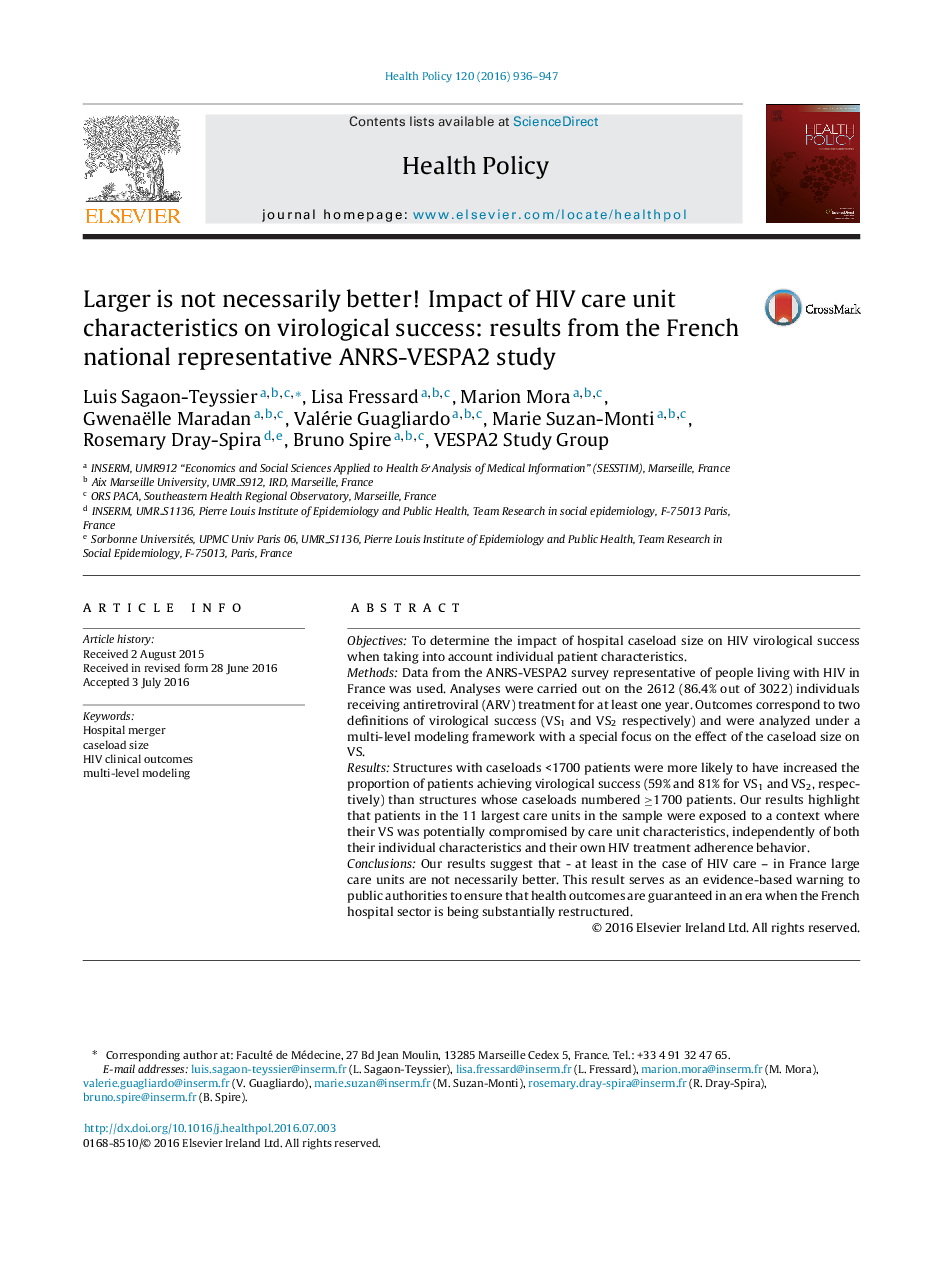| Article ID | Journal | Published Year | Pages | File Type |
|---|---|---|---|---|
| 4197750 | Health Policy | 2016 | 12 Pages |
•Virological success variability is due to both individual and care units heterogeneity.•Structures with HIV dominant activity were associated with increased virological success likelihood.•Caseload size appears as the most important structural variable explaining virological success.•At least for HIV care large care units are not necessarily better.
ObjectivesTo determine the impact of hospital caseload size on HIV virological success when taking into account individual patient characteristics.MethodsData from the ANRS-VESPA2 survey representative of people living with HIV in France was used. Analyses were carried out on the 2612 (86.4% out of 3022) individuals receiving antiretroviral (ARV) treatment for at least one year. Outcomes correspond to two definitions of virological success (VS1 and VS2 respectively) and were analyzed under a multi-level modeling framework with a special focus on the effect of the caseload size on VS.ResultsStructures with caseloads <1700 patients were more likely to have increased the proportion of patients achieving virological success (59% and 81% for VS1 and VS2, respectively) than structures whose caseloads numbered ≥1700 patients. Our results highlight that patients in the 11 largest care units in the sample were exposed to a context where their VS was potentially compromised by care unit characteristics, independently of both their individual characteristics and their own HIV treatment adherence behavior.ConclusionsOur results suggest that - at least in the case of HIV care – in France large care units are not necessarily better. This result serves as an evidence-based warning to public authorities to ensure that health outcomes are guaranteed in an era when the French hospital sector is being substantially restructured.
